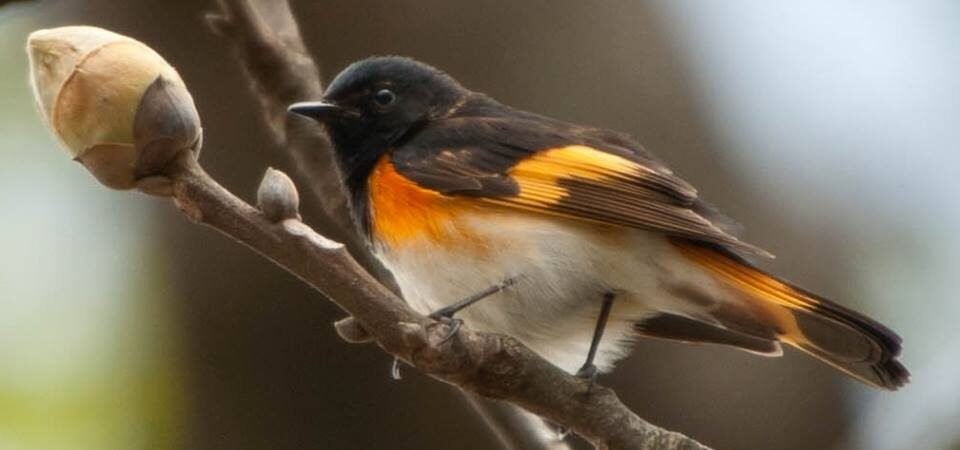Fall officially arrives at 2:19pm EDT on Monday September 22. For birds, the fall season has been in effect for a few weeks. Fall means cooler temperatures, more comfortable birding and the arrival of many new seasonal birds. It’s a good time to review some of our fall arrivals. In addition to listing and showing a picture of some of these birds, I’ve included the links to their “Bird of the Week” articles.

American Redstarts are the always the first bird that comes to my mind when I think of fall birding. That’s because their flight pattern and yellow and brown tails remind me of falling leaves. They began arriving in mid-August and by mid-November, most have moved further south to winter in northern South America.
My brain wasn’t used to considering Palm Warblers when I spent 20 minutes recently trying to identify this bird hopping along the edge of Palmetto Lake. Its tail bobbing and yellow under its tail should have given me my first clue but I was hoping for something more exotic. Instead, it was this common fall and winter visitor.


Yellow-Rumped Warblers will be arriving mid-October. All winter long they will be maybe the most common siting, flittering around everywhere, showing off their bright yellow patch above their tails.



Many other warblers pass through in the fall. Frequently seen at Palmetto Lake are Prairie Warblers, Yellow Warblers and my favorite (both by name and when seen) is the Black-throated Blue Warbler.




Fall also means the arrival of those confusing Little Brown Jobs—the sparrows. Chipping Sparrows, Song Sparrows, Savannah Sparrows and White-throated Sparrows all arrive later in the fall and stay until spring.

Piping Plovers began arriving from their Arctic breeding grounds in mid-August. We will enjoy seeing them on North Beach until May.
While birding Palmetto lake last week, I saw my first Pie-billed Grebe. eBird says they are in Charleston County year-round but their numbers are higher in October through March.


Hermit Thrush won’t arrive until mid-October and will stay until mid-April. It’s always fun to see them running along the ground under my feeders.
I knew I hadn’t seen a Gray Catbird recently. A review of Seabrook Island Birders Checklist confirmed they are rare in Summer but are common in the other seasons so I’ll be looking for them to be returning and staying through spring.


I normally don’t think of Bald Eagles as migratory but eBird statistics confirm many of the Bald Eagles go to cooler climates for the summer. They return in the fall and by November and December have upgraded their nests and have begun laying eggs.
While we say hello to our new arrivals, we’d be remiss to not say good-bye to our Summer visitors. We’ll miss the Great Crested Flycatchers, Green Herons, and Mississippi Kites. Although a few will stay all winter, we will also miss all of the Painted Buntings and Ruby-throated Hummingbirds.
This has already got me thinking about who will arrive for winter….stay tuned.
Submitted by: Judy Morr

